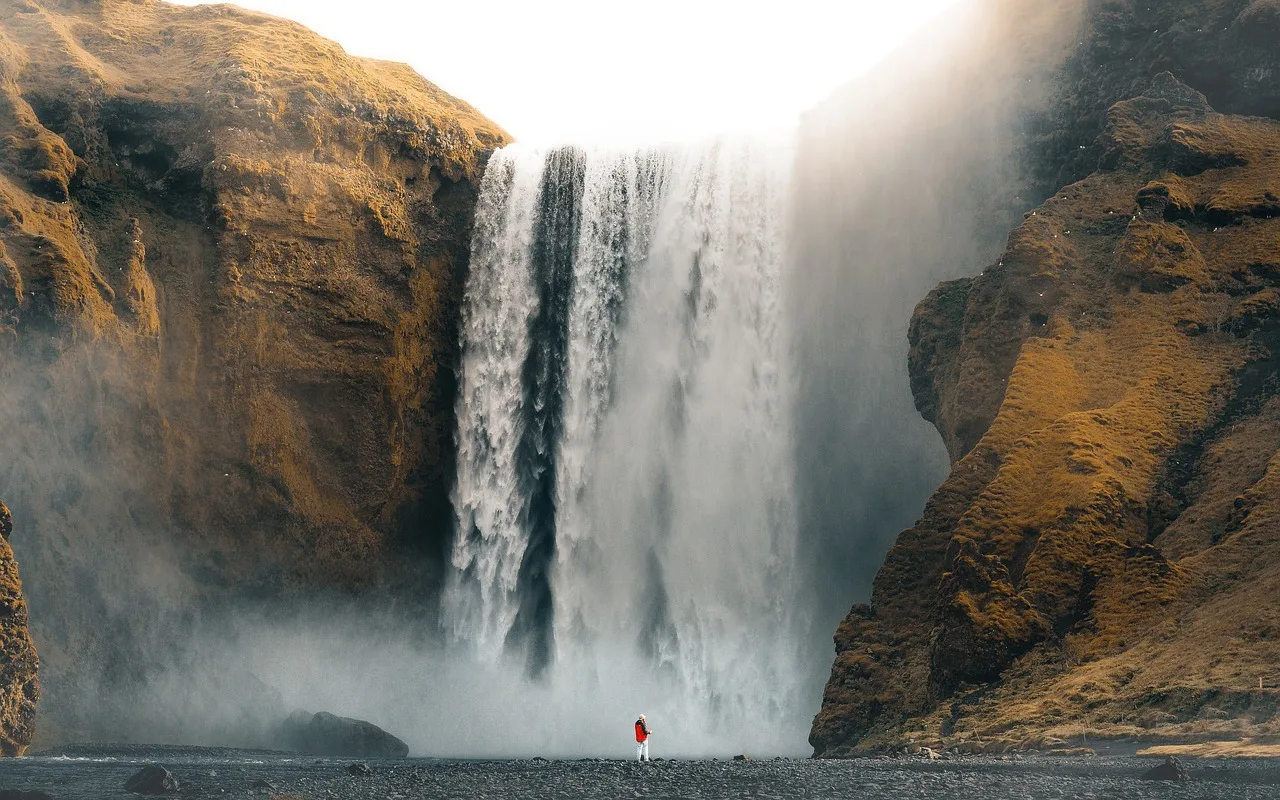
I. Introduction
Iceland, with its breathtaking landscapes and otherworldly beauty, has become a bucket-list destination for many adventurers and nature enthusiasts. From cascading waterfalls and towering glaciers to steaming geothermal pools and mystical lava fields, this Nordic island offers a truly unforgettable experience. However, to make the most of your journey to the land of fire and ice, it’s crucial to choose the right time to visit. In this guide, we’ll delve into the various seasons and unveil the best times to explore Iceland’s wonders, ensuring an immersive and awe-inspiring adventure that aligns with your preferences and interests.
Table of Contents
II. Understanding Iceland’s Climate (Best Time to Visit Iceland)
Iceland’s unique location near the Arctic Circle and the influence of the Gulf Stream give rise to a distinctive climate characterized by dynamic weather patterns and dramatic shifts. Understanding Iceland’s climate is essential for planning a successful and enjoyable trip. Let’s explore the four seasons and their characteristics:
- Winter (December to February) Best Time to Visit Iceland:
- Winter in Iceland brings long nights and chilly temperatures.
- Average temperatures range from -1°C to 4°C (30°F to 39°F) in coastal areas.
- Snowfall is common, particularly in the northern and eastern parts of the country.
- Winter is ideal for witnessing the mesmerizing Northern Lights, engaging in winter sports, and exploring ice caves and glaciers.
- Spring (March to May) Best Time to Visit Iceland:
- Spring signals the awakening of nature after the long winter.
- Average temperatures range from 2°C to 7°C (36°F to 45°F) in coastal areas.
- Days become longer, and the landscape gradually transforms with the arrival of vibrant colors and blooming flora.
- Spring is an excellent time for birdwatching, as migratory birds return and nesting activities begin.
- Summer (June to August) Best Time to Visit Iceland:
- Iceland’s summers are mild, with long daylight hours.
- Average temperatures range from 10°C to 13°C (50°F to 55°F) in coastal areas.
- The midnight sun phenomenon occurs, offering 24-hour daylight in the northern parts of the country.
- Summer is perfect for outdoor activities like hiking, exploring waterfalls, and enjoying Iceland’s pristine landscapes.
- Fall (September to November) Best Time to Visit Iceland:
- Fall brings cooler temperatures and shorter days as Iceland prepares for winter.
- Average temperatures range from 4°C to 8°C (39°F to 46°F) in coastal areas.
- The vibrant fall foliage paints the landscapes with hues of red, orange, and gold.
- Fall is an excellent time to experience fewer crowds, witness the sheep round-up, and attend cultural festivals.
It’s important to note that Iceland’s weather can be unpredictable, even within a single day. Rapid changes in weather conditions, including rain, wind, and fog, are common. It’s advisable to dress in layers, be prepared for varying weather conditions, and check weather forecasts regularly.
Understanding Iceland’s climate and the distinct characteristics of each season will help you plan your activities, pack accordingly, and make the most of your visit to this captivating land of fire and ice.
III. Summer Delights (Best Time to Visit Iceland)
A. The Midnight Sun Phenomenon
Iceland’s summer months offer a truly magical experience known as the Midnight Sun phenomenon. As the sun lingers near the horizon without fully setting, the country is bathed in ethereal light, creating an enchanting atmosphere for endless exploration and outdoor activities. Let’s delve into the wonders of the Midnight Sun in Iceland:
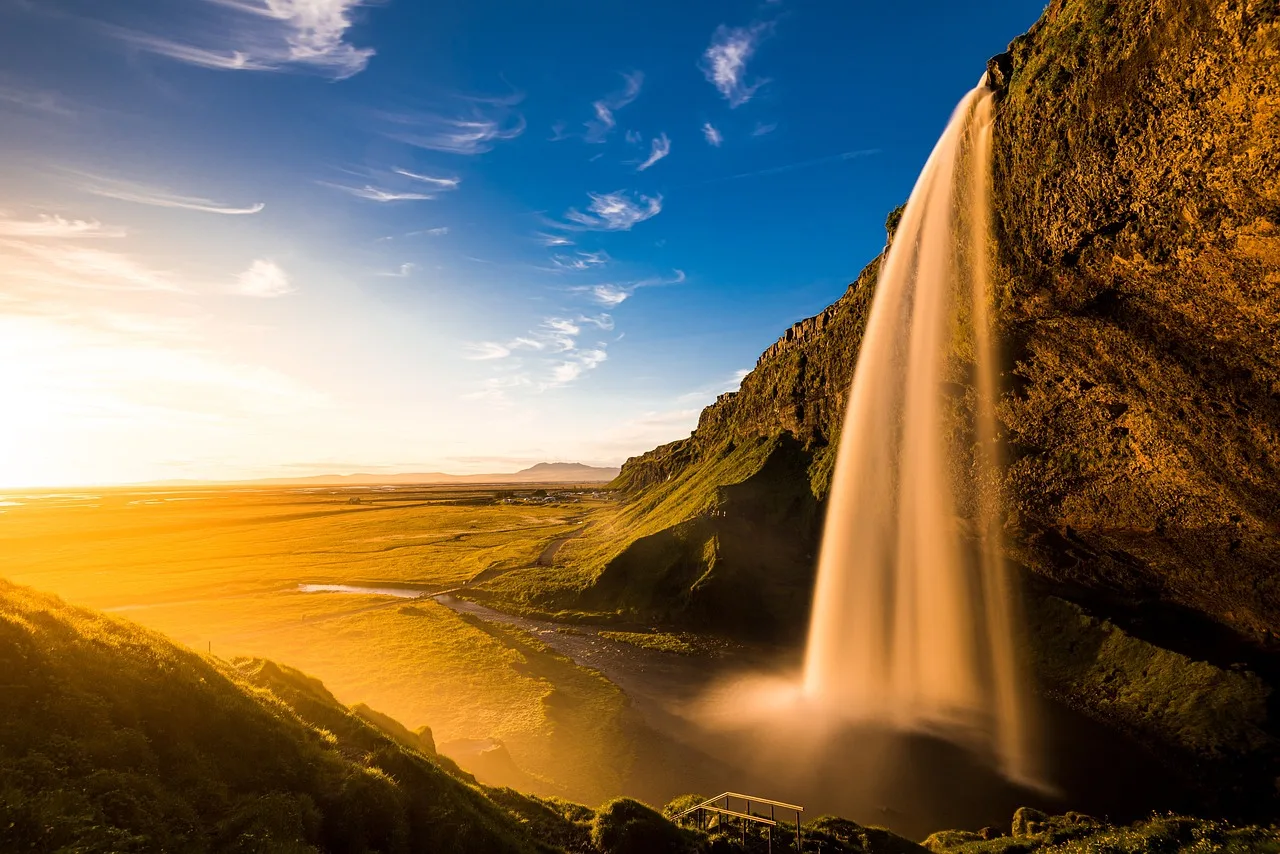
- Endless Daylight: The Midnight Sun occurs in the northern parts of Iceland, particularly during the summer solstice around June 21st. During this time, the sun remains visible for 24 hours, casting a warm glow over the landscapes and creating an extraordinary sense of timelessness.
- Extended Exploration: With the sun never fully setting, visitors have ample time to indulge in outdoor activities and explore Iceland’s breathtaking natural wonders. Whether it’s hiking in the highlands, discovering hidden waterfalls, or embarking on a scenic road trip, the extended daylight hours provide endless opportunities for adventure.
- Photography Paradise: The soft and golden light during the Midnight Sun period enhances Iceland’s already awe-inspiring landscapes, making it a paradise for photographers. Capture stunning images of cascading waterfalls, rugged lava fields, and majestic glaciers bathed in the gentle glow of the sun, creating unforgettable moments frozen in time.
- Outdoor Activities: Take advantage of the extended daylight to engage in a wide range of outdoor pursuits. From kayaking along tranquil fjords and fishing in pristine rivers to horseback riding across open meadows and camping under the bright sky, the Midnight Sun allows you to immerse yourself fully in Iceland’s natural wonders.
- Festivals and Celebrations: The Midnight Sun period also marks a time of vibrant celebrations and festivals throughout the country. Experience the lively atmosphere of music festivals, cultural events, and traditional gatherings, where locals and visitors come together to celebrate the summer season and embrace the joyful spirit of Iceland.
It’s worth noting that the Midnight Sun phenomenon is more prominent in the northern parts of Iceland, such as Akureyri and the Westfjords, where the daylight extends for the longest durations. However, even in other regions of the country, the summer months offer extended daylight hours, allowing for memorable experiences throughout Iceland.
Embrace the magic of the Midnight Sun, immerse yourself in the unending daylight, and revel in the endless opportunities for exploration and adventure that Iceland offers during its summertime. It’s an extraordinary time when the boundaries between day and night blur, leaving you with unforgettable memories of a land bathed in perpetual sunlight.
B. Thriving Wildlife (Best Time to Visit Iceland)
One of the remarkable aspects of Iceland’s summer season is the flourishing wildlife that graces the land and surrounding waters. From charming puffins nesting on coastal cliffs to majestic whales swimming in the ocean depths, Iceland offers captivating encounters with diverse and thriving wildlife. Let’s explore some of the highlights:
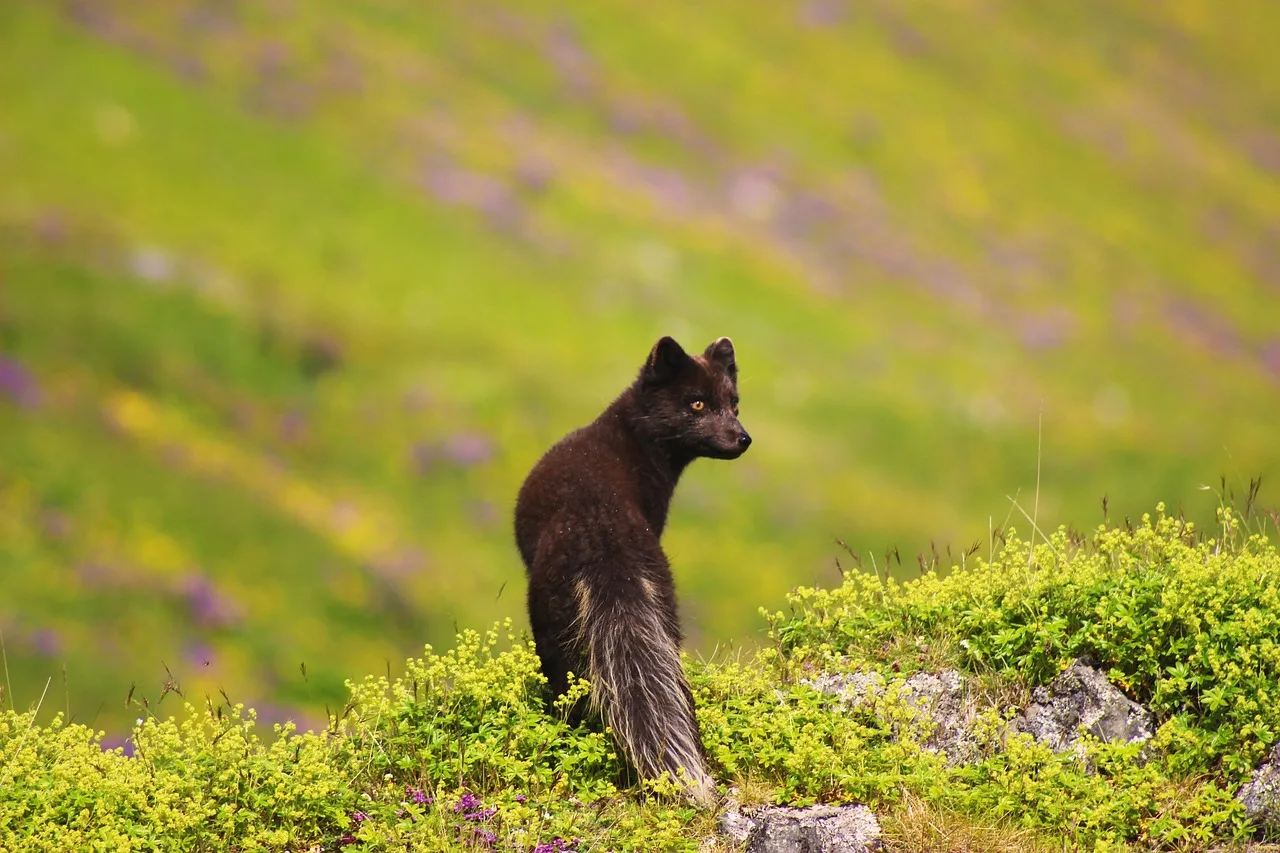
- Puffins: Iceland is home to one of the largest Atlantic puffin populations in the world. These adorable seabirds arrive in summer to breed and nest on coastal cliffs, creating bustling colonies. Witness their vibrant beaks and amusing waddles as they gather in large numbers, providing endless opportunities for observation and photography.
- Whales: Iceland’s coastal waters are teeming with marine life, including various whale species. Take a whale-watching excursion from locations such as Reykjavík, Húsavík, or Akureyri, and embark on an unforgettable adventure to spot magnificent creatures like humpback whales, minke whales, orcas (killer whales), and even the elusive blue whale, the largest mammal on Earth.
- Seals: Iceland’s rocky coastlines and remote beaches serve as havens for seals. Common and grey seals can be observed lounging on the shores or bobbing playfully in the water. Look out for seal colonies in locations like Jökulsárlón Glacier Lagoon, Vatnsnes Peninsula, or the Westfjords, where you can witness these charismatic creatures in their natural habitats.
- Arctic Foxes: Iceland’s only native land mammal, the Arctic fox, adapts to the harsh Arctic environment. During summer, their thick winter coats transition to a lighter, brownish color, allowing them to blend into the vibrant landscapes. Spot these elusive creatures in remote areas like the Westfjords or the Hornstrandir Nature Reserve.
- Birdlife: Beyond puffins, Iceland is a haven for various bird species during the summer. Look out for graceful swans, elegant eiders, colorful Arctic terns, and majestic golden eagles. With an abundance of wetlands, cliffs, and coastal areas, the opportunities for birdwatching and bird photography are endless.
Remember to approach wildlife with respect and adhere to responsible viewing guidelines to minimize disturbance to their natural habitats. Join guided tours led by knowledgeable experts who prioritize the well-being of the animals and provide informative insights into their behaviors and conservation efforts.
Immerse yourself in Iceland’s thriving wildlife during the summer months, and let the wonders of nature unfold as you encounter puffins, whales, seals, and an array of bird species. It’s a chance to witness the incredible biodiversity that thrives in this beautiful Nordic island nation.
C. Hiking and Trekking (Best Time to Visit Iceland)
Iceland’s summer season offers an exceptional opportunity for outdoor enthusiasts to embark on memorable hiking and trekking adventures. With its diverse landscapes, dramatic terrain, and breathtaking natural landmarks, Iceland presents a haven for hikers seeking both challenging trails and awe-inspiring vistas. Here are some of the excellent hiking and trekking opportunities to explore:
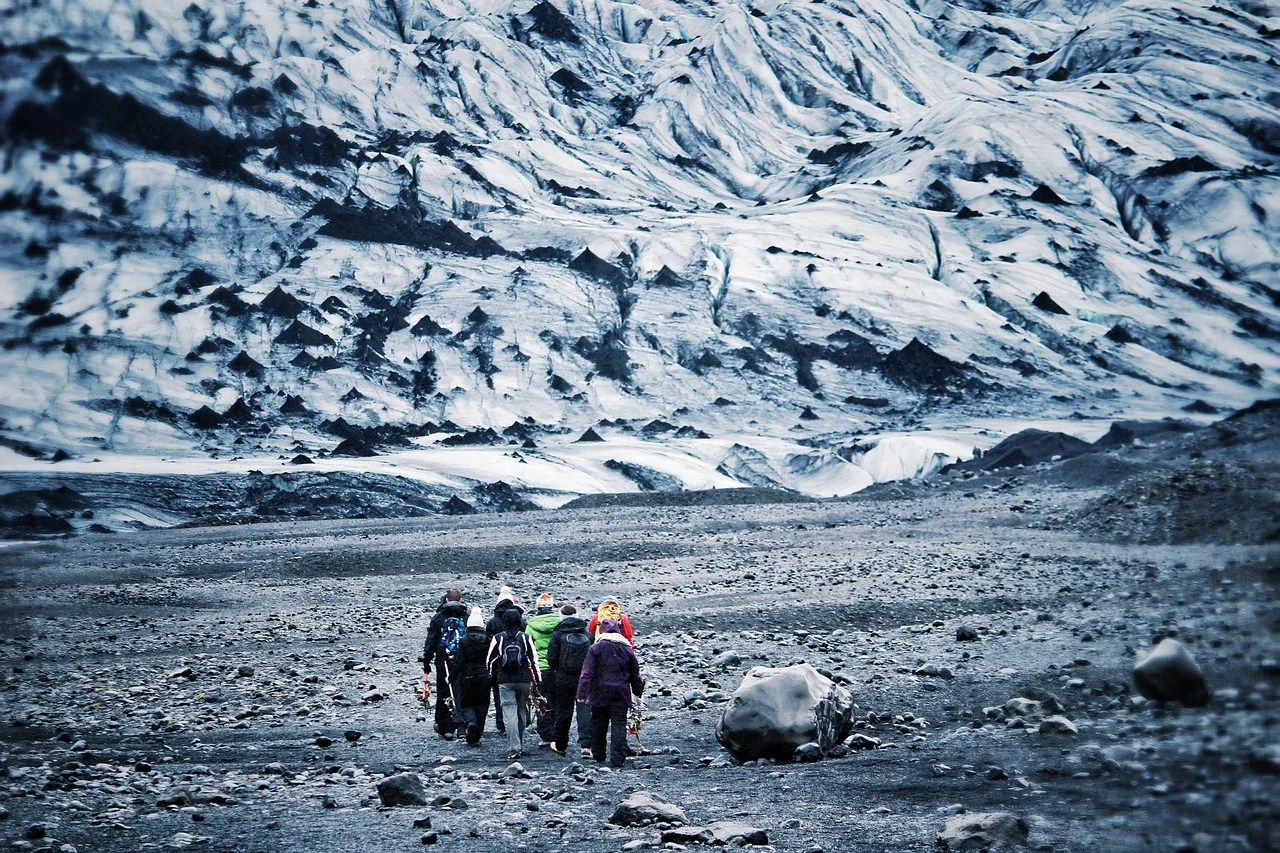
- Laugavegurinn Trail: Considered one of Iceland’s most famous hiking routes, the Laugavegurinn Trail stretches approximately 55 kilometers (34 miles) through the Highlands. This multi-day trek takes you through stunning landscapes, including colorful rhyolite mountains, geothermal hot springs, glacial valleys, and the breathtaking Þórsmörk (Thorsmork) Nature Reserve.
- Fimmvörðuháls Pass: Connected to the Laugavegurinn Trail, the Fimmvörðuháls Pass offers a challenging and rewarding hike. This approximately 25-kilometer (15-mile) route takes you between the Eyjafjallajökull and Mýrdalsjökull glaciers, offering sweeping views of volcanic craters, lava fields, and cascading waterfalls, including the stunning Skógafoss and Seljalandsfoss.
- Hornstrandir Nature Reserve: Located in the remote Westfjords, Hornstrandir provides an untouched wilderness perfect for hiking and trekking enthusiasts seeking solitude and pristine nature. With its rugged cliffs, stunning fjords, and rich birdlife, Hornstrandir offers a unique and unforgettable hiking experience.
- Landmannalaugar: Situated in the Highlands, Landmannalaugar is renowned for its geothermal wonders and vibrant landscapes. The area features a variety of hiking trails suitable for all skill levels, including the popular 4-day Laugavegur Trek that ends in Þórsmörk. Marvel at colorful rhyolite mountains, steaming hot springs, lava fields, and panoramic views of the surrounding area.
- Skaftafell: Located within Vatnajökull National Park, Skaftafell offers a range of hiking opportunities amidst stunning glacial landscapes. Follow the trails to iconic landmarks like Svartifoss, a unique waterfall surrounded by basalt columns, or venture further into the park to explore glaciers, ice caves, and towering peaks.
- Glymur Waterfall: For a shorter but still rewarding hike, head to Glymur, Iceland’s second-highest waterfall. The trail takes you through a picturesque canyon and offers breathtaking views as you cross a thrilling suspension bridge and ascend to witness the cascading waters plunging into the gorge below.
When embarking on hiking and trekking adventures in Iceland, it’s crucial to be prepared with appropriate gear, clothing, and navigation tools. Additionally, check weather conditions, inform others about your plans, and respect the fragile nature of the environment by leaving no trace.
Immerse yourself in Iceland’s magnificent landscapes, traverse challenging trails, and encounter natural wonders as you hike and trek through this land of fire and ice. Whether it’s traversing glaciers, exploring volcanic terrains, or discovering hidden waterfalls, Iceland’s summer season offers endless opportunities for outdoor exploration and unforgettable experiences.
D. Festivals and Events (Best Time to Visit Iceland)
Iceland’s summer season is a time of vibrant cultural celebrations, music festivals, and artistic events that showcase the nation’s rich cultural scene. From energetic music festivals set against stunning landscapes to local traditions and arts gatherings, Iceland offers a wide array of festive experiences during this time. Let’s explore some of the festivals and events that add vibrancy to the Icelandic summer:
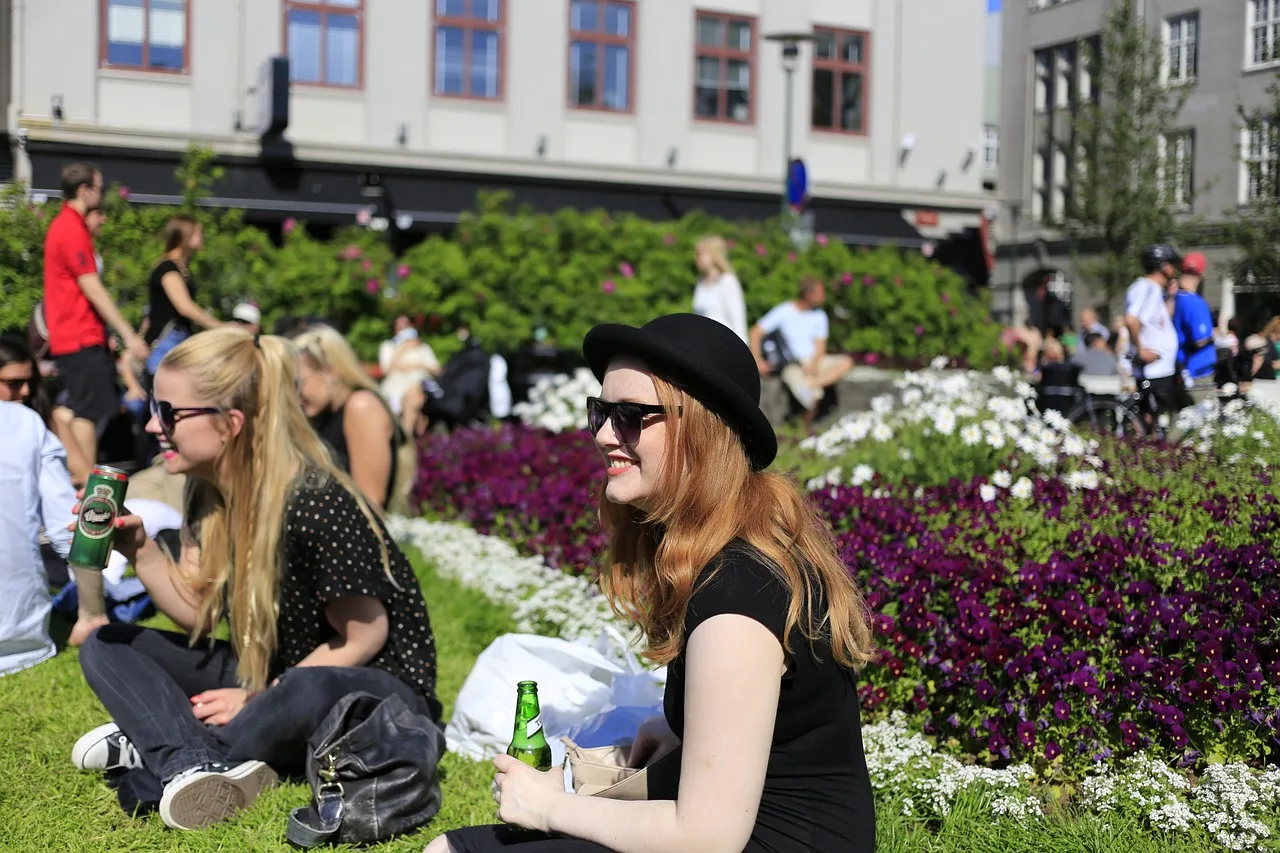
- Iceland Airwaves: Held annually in Reykjavík, Iceland Airwaves is a renowned music festival that attracts both local and international artists. The festival showcases a diverse range of musical genres, from indie rock and pop to electronic and experimental music. Enjoy performances at various venues across the city and immerse yourself in the lively atmosphere of this iconic event.
- Secret Solstice: Set against the backdrop of Iceland’s otherworldly landscapes, Secret Solstice is a unique music festival that takes place during the summer solstice. Experience the magic of 24-hour daylight as you enjoy performances by international artists in breathtaking outdoor settings, including glaciers, lava fields, and hot springs.
- Reykjavík Arts Festival: Celebrating various art forms, the Reykjavík Arts Festival is a major cultural event held annually in the capital city. The festival brings together renowned artists, musicians, dancers, and performers from Iceland and around the world, showcasing innovative and thought-provoking works in theater, dance, music, visual arts, and more.
- National Day (Þjóðhátíð): Celebrated on June 17th, Iceland’s National Day is a joyous occasion commemorating the country’s independence. Festivities include parades, concerts, traditional music and dance performances, and a vibrant atmosphere of national pride. The town of Vestmannaeyjar hosts one of the largest National Day celebrations, drawing locals and visitors alike.
- Viking Festival in Hafnarfjörður: Experience the spirit of the Viking age at the Viking Festival in Hafnarfjörður, a town known for its strong ties to Viking heritage. The festival offers reenactments, historical displays, traditional crafts, storytelling, music, and culinary delights, providing an immersive journey into Iceland’s fascinating Viking past.
- Cultural Nights (Menningarnótt): Held in Reykjavík and other towns across the country, Cultural Nights are vibrant events celebrating Icelandic culture. These all-day and all-night festivals feature a variety of artistic performances, exhibitions, workshops, and street entertainment, allowing visitors to engage with local artists and immerse themselves in the creative energy of the country.
- Sheep Round-Up (Réttir): As summer comes to an end, witness the traditional Sheep Round-Up, where farmers gather their sheep from the mountains and highlands. This centuries-old tradition offers a glimpse into rural Icelandic life, as participants come together to herd, sort, and mark the sheep while enjoying lively celebrations with music, dancing, and traditional food.
These are just a few examples of the festivals and events that bring Iceland’s cultural scene to life during the summer season. With a calendar filled with music, arts, and local celebrations, the Icelandic summer offers an exciting and vibrant atmosphere where visitors can immerse themselves in the country’s unique cultural heritage.
Immerse yourself in the rhythm of Icelandic culture, revel in the music, arts, and traditions, and embrace the joyful spirit of the festivals and events that make the summer season a time of celebration and cultural discovery in Iceland.
IV. Chasing the Northern Lights (Best Time to Visit Iceland)
A. Introduction to the Aurora Borealis
The ethereal dance of the Northern Lights, known as the Aurora Borealis, is a natural spectacle that captivates the hearts and minds of travelers visiting Iceland. This enchanting celestial phenomenon is a result of interactions between solar particles and Earth’s magnetic field. Let’s delve into the science and allure of the Northern Lights, and discover the best conditions for witnessing this breathtaking display:
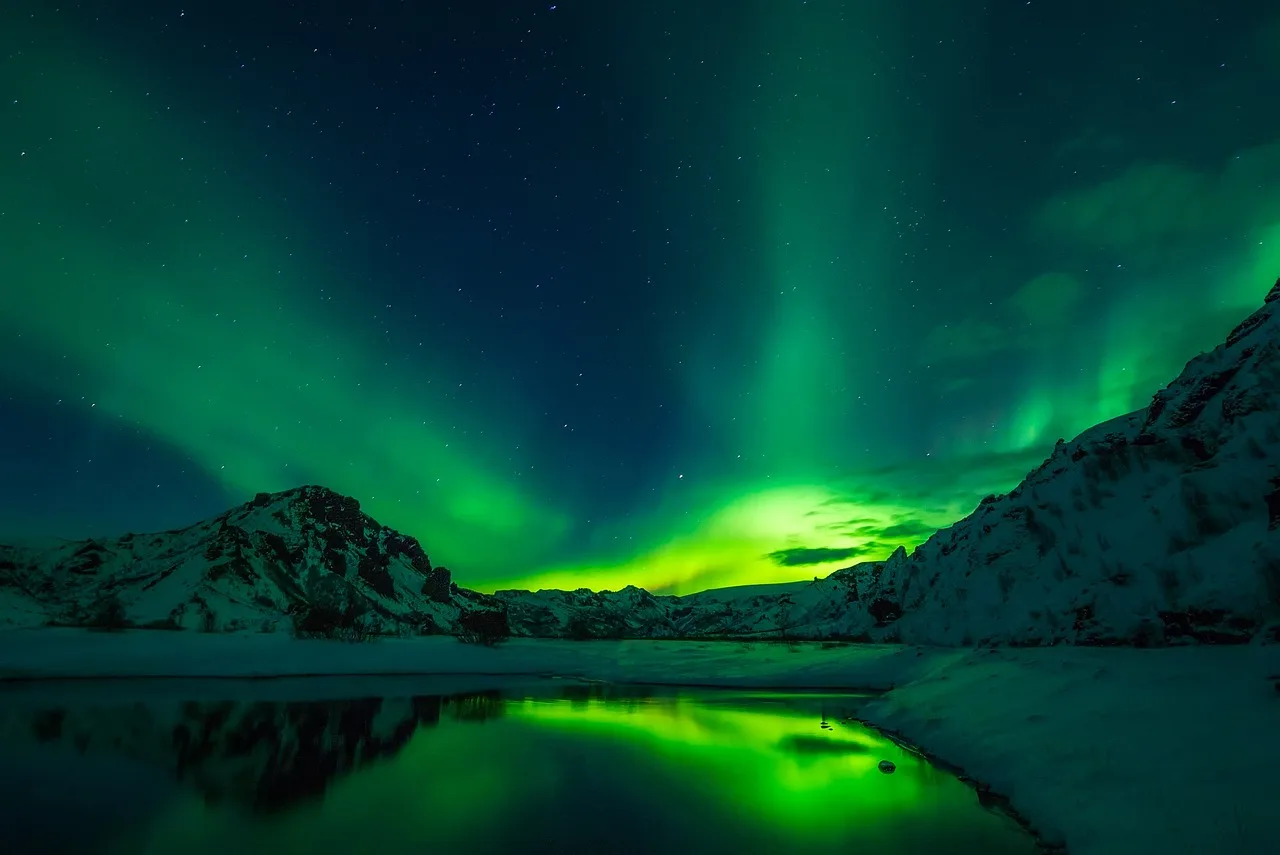
- Science Behind the Aurora Borealis: The Northern Lights occur when charged particles from the sun, primarily electrons and protons, collide with atoms and molecules in Earth’s upper atmosphere. These collisions emit colorful light, creating shimmering curtains, ribbons, or waves of green, red, purple, blue, and sometimes even yellow or pink hues. The color variations depend on the type of gas particles involved and their altitude.
- Earth’s Magnetic Field and Auroral Zones: Earth’s magnetic field plays a crucial role in the formation of the Northern Lights. The magnetic field funnels the charged particles toward the polar regions, where they interact with the atmosphere and produce the mesmerizing light display. The best chances of witnessing the Northern Lights are within the auroral zones, which lie near the magnetic poles.
- Optimal Conditions for Viewing: Several factors contribute to the optimal conditions for observing the Northern Lights in Iceland:
- Darkness: The darker the sky, the better the visibility of the Northern Lights. Seek locations away from light pollution, such as remote areas or designated Northern Lights viewing spots.
- Clear Skies: Cloud cover obstructs the view, so clear skies are ideal for Northern Lights viewing. Monitor weather forecasts and choose nights with minimal cloud cover for the best chances of witnessing the spectacle.
- Solar Activity: The intensity and frequency of the Northern Lights correlate with solar activity. Keep an eye on solar activity forecasts, such as the KP index, which measures geomagnetic activity. Higher KP values generally indicate better chances of seeing the lights.
- Seasonal Considerations: While the Northern Lights can be seen year-round in Iceland, the optimal time is during the darker months of September to mid-April when nights are longer. Additionally, being closer to the winter solstice around December provides extended periods of darkness, increasing the chances of witnessing the lights.
- Locations for Northern Lights Viewing: Iceland offers various locations that provide excellent opportunities for Northern Lights viewing due to their dark skies and favorable conditions. Some popular spots include:
- Reykjanes Peninsula: A short drive from Reykjavík, this area offers easy accessibility and dark skies, making it a convenient choice for Northern Lights sightings.
- Thingvellir National Park: This UNESCO World Heritage Site combines natural beauty with historical significance. Its vast open spaces and clear horizons make it an excellent location for Northern Lights photography.
- Vatnajökull National Park: Home to Europe’s largest glacier, Vatnajökull National Park provides a stunning backdrop for Northern Lights viewing. Its remote and pristine landscapes offer a unique and unforgettable experience.
- Westfjords: With minimal light pollution and a rugged coastal landscape, the Westfjords provide a peaceful setting for enjoying the Northern Lights in a tranquil environment.
Experiencing the Northern Lights in Iceland is a truly breathtaking phenomenon. Prepare warm clothing, bring a tripod for photography, and allow yourself to be immersed in the captivating dance of colors that light up the night sky, creating memories that will last a lifetime.
Please be aware that the Northern Lights are a natural phenomenon, and sightings cannot be guaranteed. However, with careful planning, patience, and a touch of luck, you may have the privilege of witnessing this mesmerizing display of nature’s grandeur.
B. Winter Solstice: A Northern Lights Extravaganza (Best Time to Visit Iceland)
During the winter solstice, which occurs around December 21st, Iceland transforms into a celestial theater where the mesmerizing Northern Lights take center stage. This period offers an ideal opportunity to witness the ethereal dance of colors in the dark Arctic skies. With long nights and limited daylight, the chances of encountering this awe-inspiring phenomenon are significantly heightened.
To maximize your chances of witnessing the Northern Lights during the winter solstice, it is advisable to venture away from urban areas and seek out locations with minimal light pollution. Here are some of the best places in Iceland to experience this magical display:
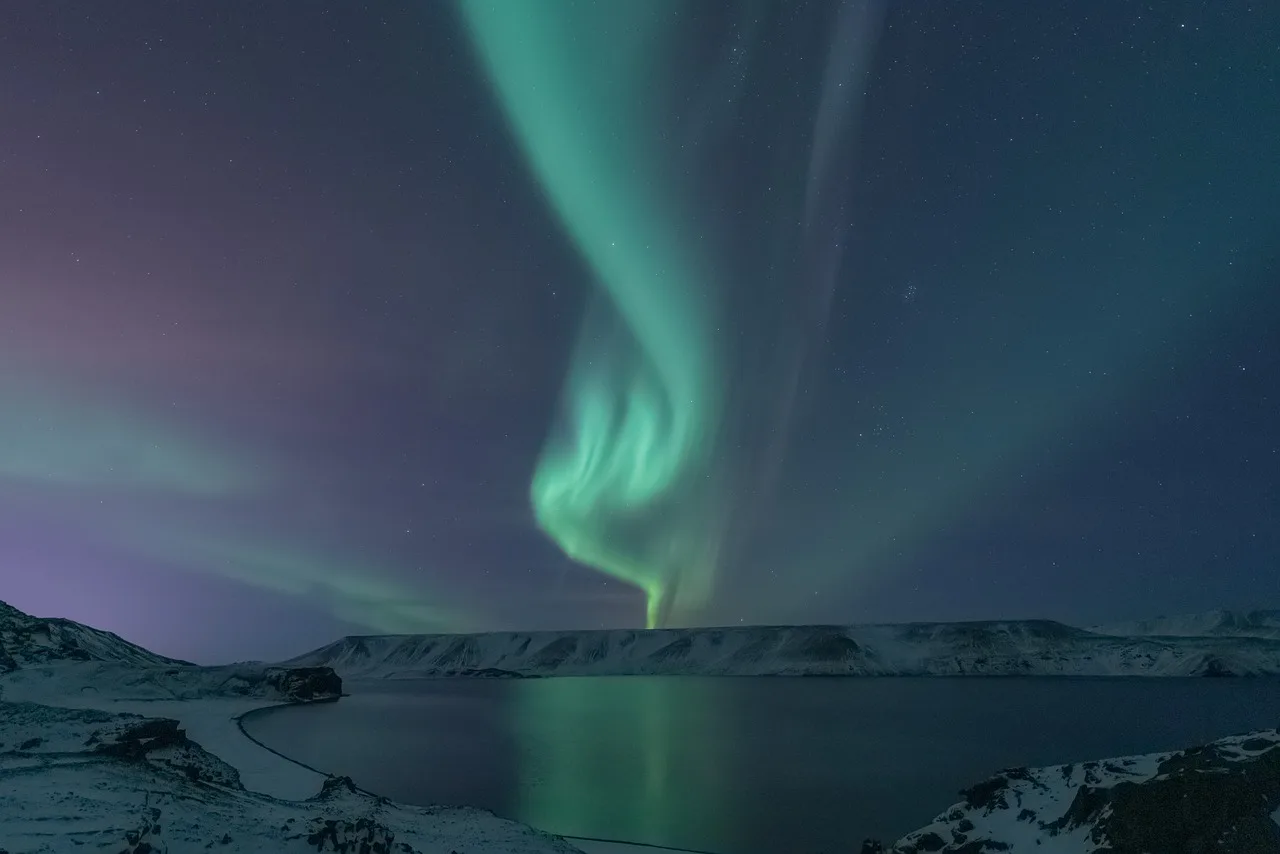
- Reykjanes Peninsula: Located close to Reykjavík, this area offers dark skies and stunning landscapes, making it an accessible option for those short on time.
- Thingvellir National Park: Combining natural beauty with historical significance, Thingvellir provides a picturesque setting for Northern Lights viewing.
- Snæfellsnes Peninsula: Known as “Iceland in miniature,” this region showcases diverse landscapes and dramatic coastal scenery, creating a captivating backdrop for the aurora borealis.
- Lake Mývatn: Nestled in the north of Iceland, this volcanic area boasts a unique combination of geothermal activity and serene beauty, enhancing the Northern Lights experience.
- Westfjords: With its remote and untouched landscapes, the Westfjords offer a tranquil environment for witnessing the celestial spectacle.
For optimal viewing conditions, it is important to keep the following factors in mind:
- Weather Conditions: Clear skies are essential for observing the Northern Lights. Monitoring weather forecasts and choosing nights with minimal cloud cover significantly improves your chances.
- Geomagnetic Activity: The intensity of the Northern Lights is influenced by solar activity. Keep an eye on the aurora forecast and aim for nights when the geomagnetic activity level is high.
- Darkness: The darker the skies, the more vibrant the Northern Lights. Plan your visit during the darkest hours, usually between 10 PM and 2 AM, for the best experience.
Keep in mind that patience is crucial when pursuing the Northern Lights. Sometimes they appear in a matter of minutes, while other times you may need to wait for hours. Dress warmly, bring a thermos of hot cocoa, and prepare to be enchanted as the curtains of light shimmer and dance across the Icelandic winter sky.
C. Weather Considerations and Winter Activities (Best Time to Visit Iceland)
Winter travel in Iceland presents unique challenges and rewards. The country’s stunning landscapes transform into a winter wonderland, offering exciting opportunities for outdoor activities. However, it’s essential to be prepared and consider the weather conditions for a safe and enjoyable experience. Let’s explore some weather considerations and recommended winter activities in Iceland:
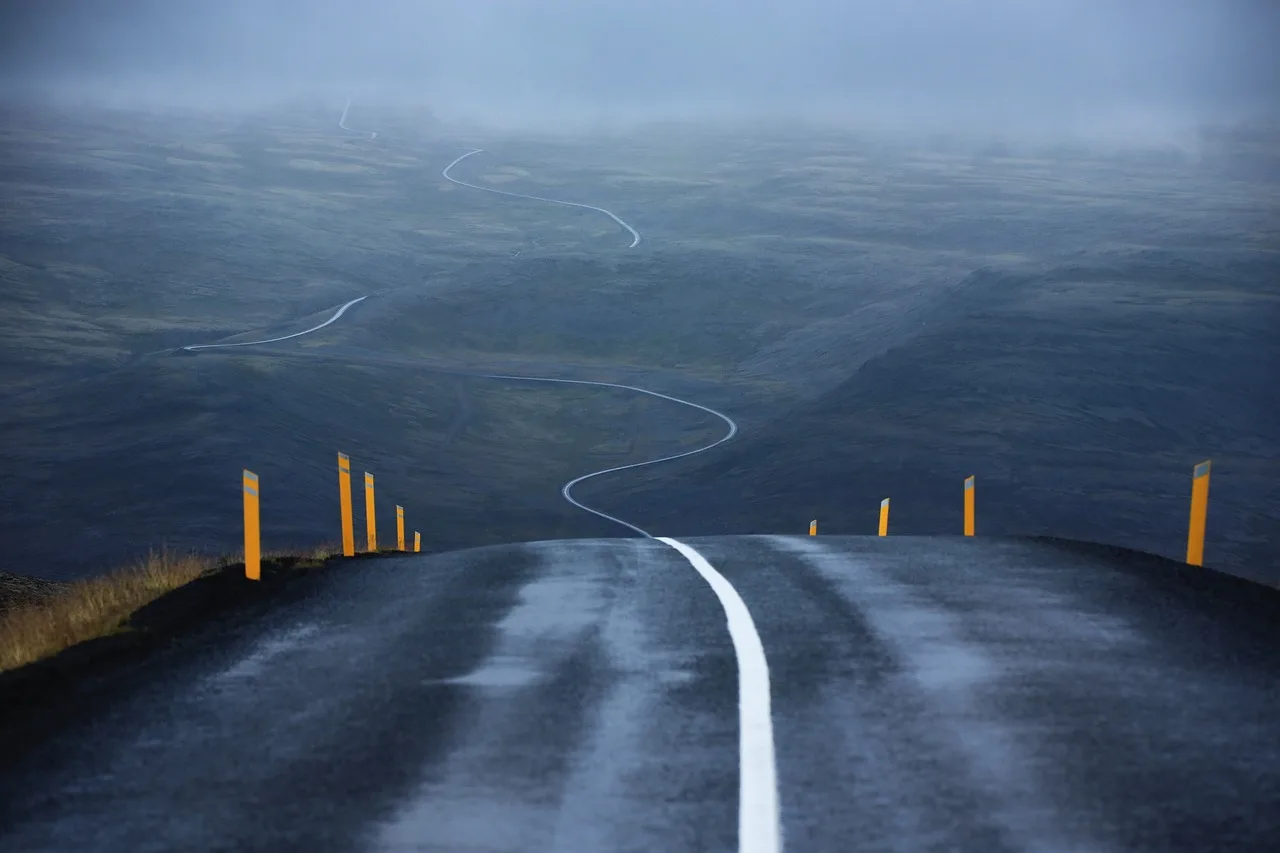
- Weather Considerations:
- Winter Conditions: Iceland’s winter is characterized by cold temperatures, strong winds, and snowfall. Be ready for changing weather conditions and fluctuations in temperature.
- Limited Daylight: With shorter daylight hours, plan your activities accordingly and make the most of the available daylight for outdoor adventures.
- Road Conditions: Winter brings icy and snowy roads, especially in more remote areas. Familiarize yourself with driving in winter conditions, check road conditions, and consider renting a 4×4 vehicle for better traction and safety.
- Aurora Borealis: Winter is an excellent time to witness the captivating Northern Lights. However, the weather plays a crucial role, as clear skies are necessary for visibility. Monitor weather and aurora forecasts to increase your chances of witnessing this celestial spectacle.
- Winter Activities:
- Ice Caving: Explore the breathtaking ice caves that form within Iceland’s glaciers during winter. Accompanied by experienced guides, venture into these otherworldly structures and marvel at the shimmering blue ice formations.
- Glacier Hiking: Strap on crampons, grab an ice axe, and embark on a glacier hiking adventure. Discover the stunning landscapes atop Iceland’s glaciers, such as Vatnajökull or Sólheimajökull, while learning about glacial formations and safety measures from knowledgeable guides.
- Snowmobiling: Experience the thrill of riding a snowmobile across Iceland’s snowy landscapes. Traverse glaciers, frozen lakes, or snow-covered mountains, enjoying the adrenaline rush and panoramic views.
- Hot Springs and Geothermal Pools: Find respite from the cold by visiting geothermal hot springs or pools scattered throughout the country. Relax in the warm waters, surrounded by snowy landscapes, and let the soothing properties of these natural features rejuvenate you.
- Dog Sledding: Embark on a dog sledding excursion and let a team of eager and friendly sled dogs take you on a thrilling ride through Iceland’s snowy wilderness. Experience the bond between the dogs and their mushers as you glide across the snowy terrain.
- Winter Hiking: Put on sturdy boots, bundle up in warm layers, and explore Iceland’s winter landscapes on foot. Discover frozen waterfalls, snow-covered lava fields, and serene snowy trails while immersing yourself in the tranquil beauty of the winter scenery.
Remember to prioritize safety during your winter activities by following guidelines, heeding the advice of experienced guides, and being prepared with appropriate gear and clothing. Additionally, check weather forecasts, road conditions, and adhere to any travel advisories to ensure a safe and enjoyable winter adventure in Iceland.
Embrace the magic of winter in Iceland, embrace the challenges, and indulge in unforgettable experiences amidst the snowy landscapes, frozen wonders, and thrilling winter activities that this beautiful country has to offer.
V. Fall: A Colorful Affair (Best Time to Visit Iceland)
A. Vivid Autumn Landscapes
Iceland’s fall season paints the landscapes in vibrant hues, showcasing the country’s natural beauty in a new light. As the leaves turn golden and the landscapes transition, Iceland becomes a haven for breathtaking fall foliage. Let’s delve into the beauty of Iceland’s autumn colors and discover the best places to experience this vivid display:
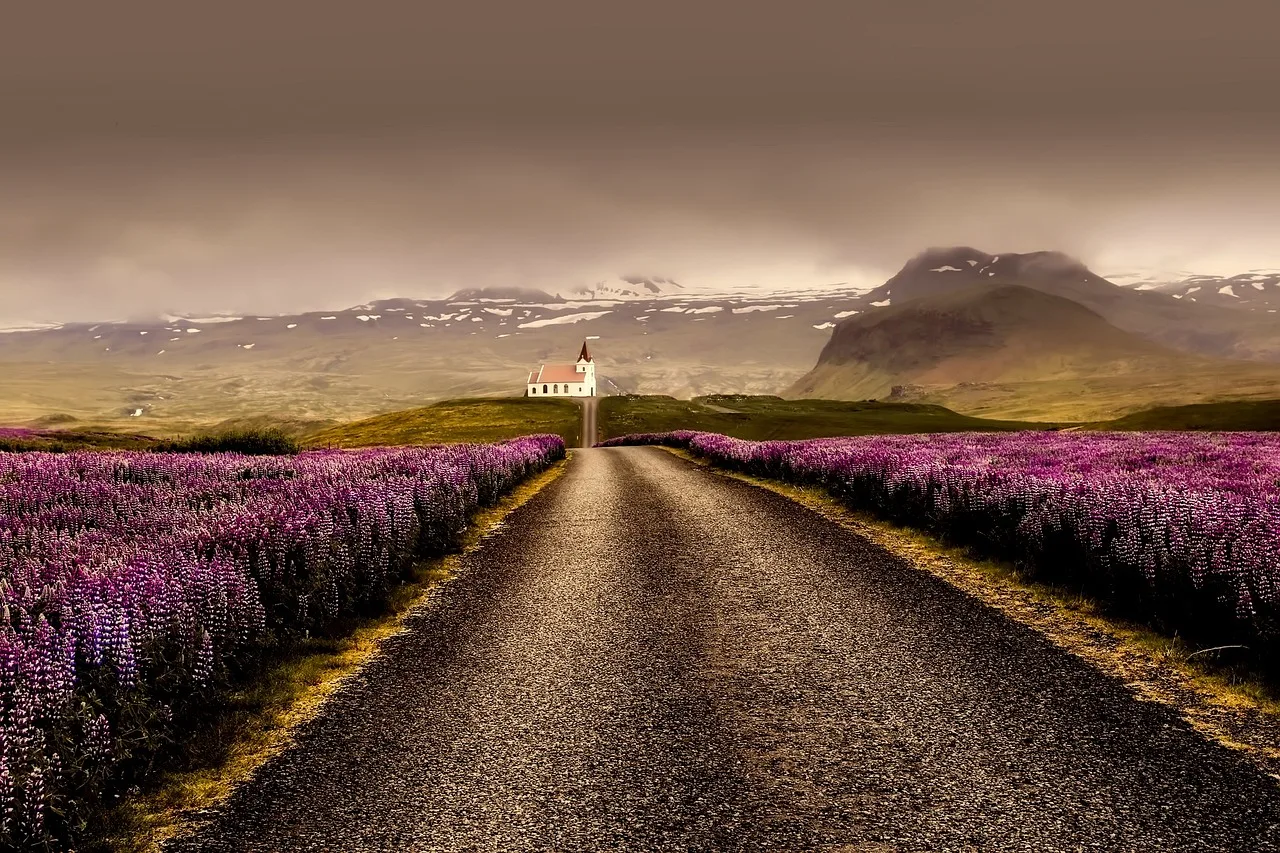
- Golden Tones and Rustic Charm: Fall in Iceland brings forth a mesmerizing palette of golden, orange, and red tones. The changing leaves add a touch of rustic charm to the already stunning landscapes, creating a picturesque scene that is a delight for nature enthusiasts and photographers.
- National Parks and Protected Areas: Iceland’s national parks and protected areas offer some of the best locations to witness the autumn colors in all their glory. Here are some noteworthy places to explore:
- Þingvellir National Park: Located near Reykjavík, Þingvellir is a UNESCO World Heritage Site and a haven for fall foliage. Explore the park’s walking trails, meandering rivers, and ancient lava formations while surrounded by the vibrant hues of autumn.
- Snæfellsjökull National Park: Situated on the Snæfellsnes Peninsula, this national park features diverse landscapes, including moss-covered lava fields, rugged coastlines, and a majestic glacier-capped volcano. During fall, the park transforms into a captivating display of autumn colors, making it a must-visit destination.
- Vatnajökull National Park: As the largest national park in Europe, Vatnajökull offers vast expanses of wilderness to explore. Witness the striking contrast between the glacier’s icy beauty and the warm tones of the surrounding vegetation during the fall season.
- Reykjanes Peninsula: The Reykjanes Peninsula, home to the famous Blue Lagoon, also boasts picturesque landscapes that showcase the autumn colors. Explore the peninsula’s geothermal areas, volcanic craters, and dramatic coastal cliffs while immersing yourself in the stunning fall foliage.
- Hiking Trails: Iceland’s hiking trails offer a more immersive experience amidst the fall colors. Some popular hiking routes where you can witness the autumn scenery include:
- Fimmvörðuháls Trail: This challenging but rewarding hike takes you through diverse landscapes, including waterfalls, valleys, and glaciers, with the added beauty of fall foliage coloring the surroundings.
- Laugavegur Trail: Known as one of Iceland’s most popular hiking routes, the Laugavegur Trail offers a diverse range of landscapes, including colorful rhyolite mountains, black sand deserts, and geothermal areas, all complemented by the vibrant autumn colors.
- Waterfalls and Countryside: Iceland’s waterfalls and rural countryside provide a stunning backdrop for fall foliage photography and scenic drives. Some notable waterfalls to visit during the fall include Seljalandsfoss, Skógafoss, and Goðafoss, where the surrounding vegetation adds a touch of warmth to the cascading water.
Immerse yourself in the vibrant colors of Iceland’s fall season, capturing the picturesque landscapes and savoring the unique beauty that autumn brings to this extraordinary country. Whether exploring national parks, hiking trails, or simply taking a leisurely drive through the countryside, let the autumn colors of Iceland create lasting memories of a truly colorful affair.
B. Fewer Crowds, Lower Prices (Best Time to Visit Iceland)
Visiting Iceland during the fall season offers a range of advantages, from quieter attractions to more affordable accommodations. As the summer crowds disperse, the country takes on a tranquil charm, allowing visitors to fully immerse themselves in Iceland’s natural wonders. Let’s explore the benefits of experiencing Iceland in the fall:
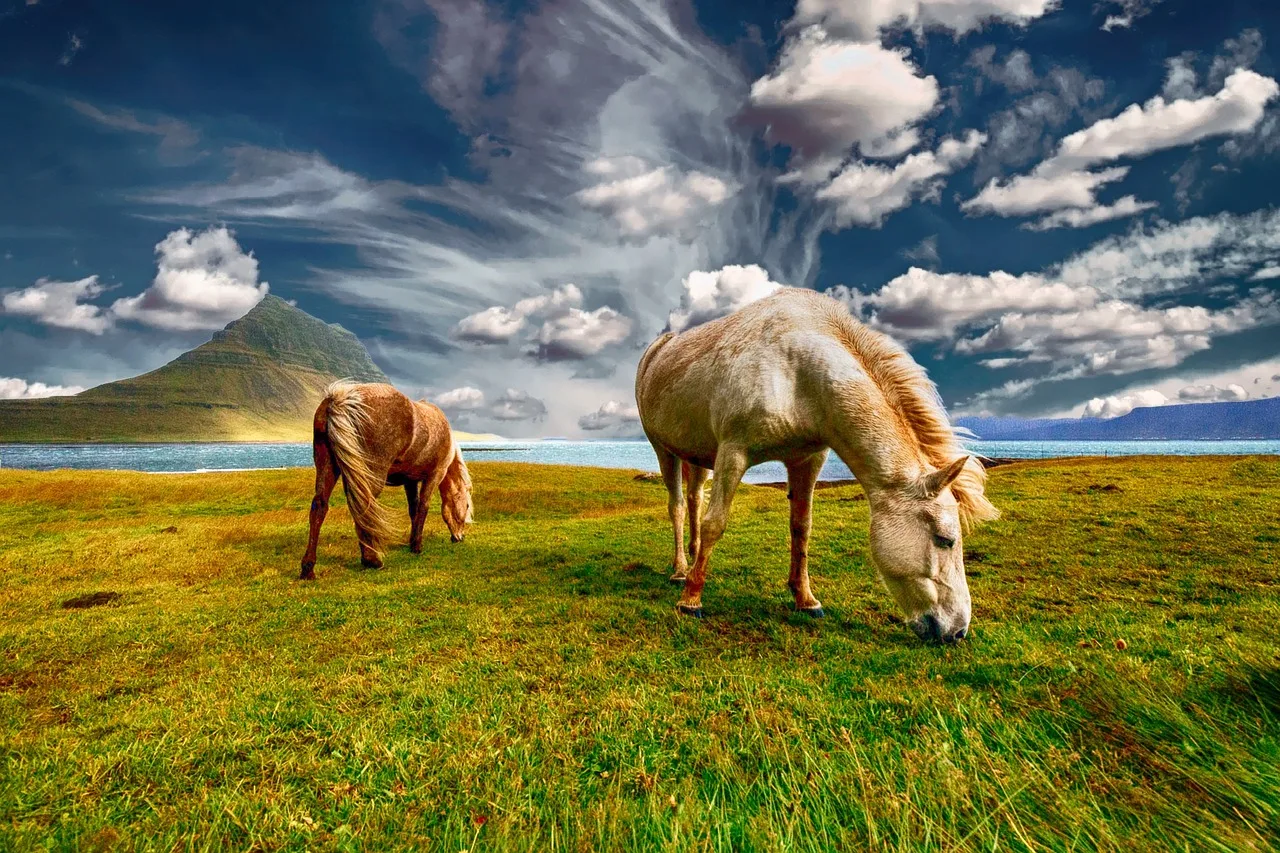
- Serenity and Solitude: Fall in Iceland brings a sense of tranquility as the tourist crowds thin out. This allows you to explore popular attractions, such as waterfalls, national parks, and geothermal areas, with fewer people around. Enjoy the serenity and solitude that the fall season offers, allowing for a more immersive and peaceful experience.
- Uninterrupted Natural Beauty: With fewer visitors, you’ll have a better chance to appreciate Iceland’s awe-inspiring landscapes without distractions. Capture stunning photographs of iconic landmarks, such as the famous waterfalls or the black sand beaches, with fewer tourists in the frame, enabling you to capture the raw beauty of the scenery.
- Increased Accessibility: The reduced crowds during fall also mean greater accessibility to popular sites and attractions. You’ll have more flexibility in planning your itinerary and enjoying the attractions at your own pace. Whether it’s hiking trails, exploring lava fields, or relaxing in natural hot springs, you can savor the experiences without feeling rushed.
- Lower Prices and Availability: Fall is considered the shoulder season in Iceland, which often translates to lower prices for accommodations, tours, and car rentals. With reduced demand, you’ll find more availability and competitive prices for lodging options, allowing you to make the most of your budget. This opens up opportunities to indulge in unique experiences or extend your stay without breaking the bank.
- Fall Festivals and Cultural Events: Iceland’s fall season is also dotted with various festivals and cultural events that showcase the country’s vibrant arts and music scene. From music festivals and film screenings to local celebrations, you can immerse yourself in Icelandic culture and join in the festivities. Experience the warmth of local hospitality and engage with the creative spirit of the country.
Take advantage of the advantages that fall brings to Iceland. Enjoy the serenity, capture the unspoiled beauty of the landscapes, and savor the experiences without the hustle and bustle of peak tourist seasons. With lower prices, increased accessibility, and a variety of cultural events, fall offers a unique opportunity to create lasting memories in Iceland while enjoying the country’s captivating attractions at your own pace.
C. Unique Harvest Experiences (Best Time to Visit Iceland)
Iceland’s harvest season is a time of abundance and celebration, showcasing the country’s agricultural heritage and the close connection between its people and the land. During this time, locals gather the fruits of their labor, and visitors have the opportunity to immerse themselves in traditional festivities and unique cultural experiences. Here are some highlights of the harvest season in Iceland:
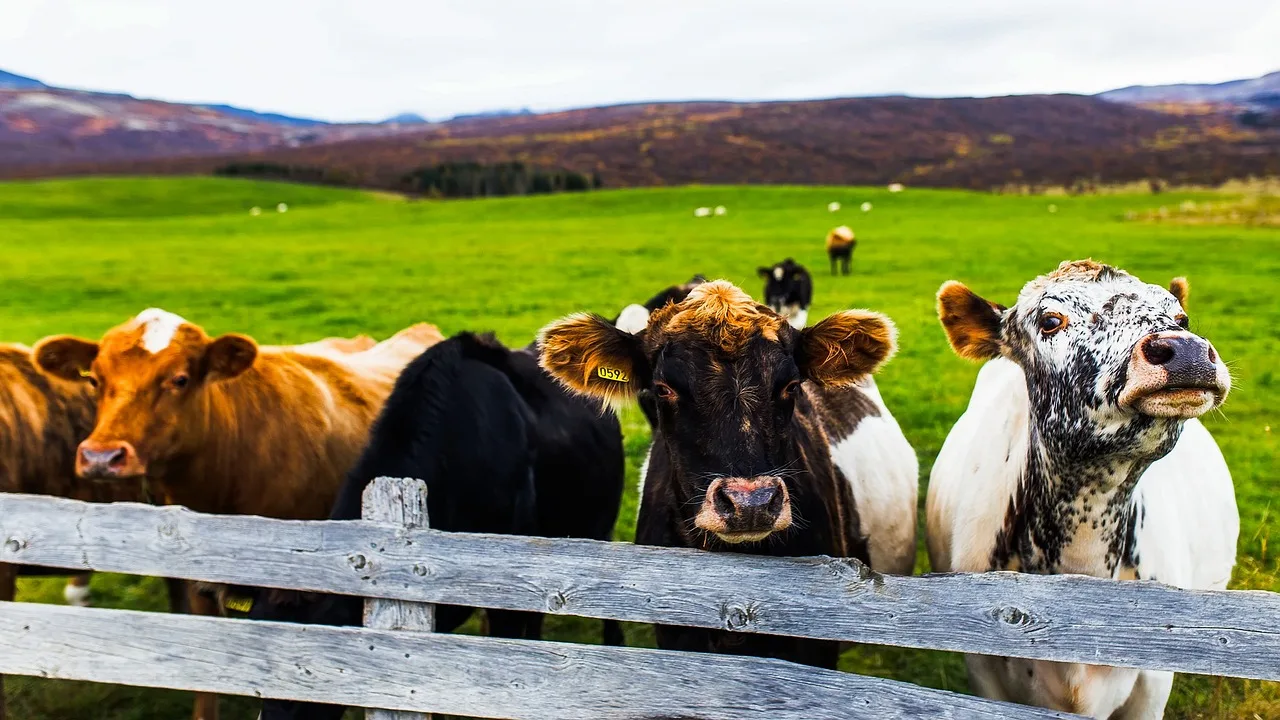
- The Icelandic Lamb: As autumn arrives, Icelandic farmers celebrate the traditional sheep round-up known as Réttir. This age-old practice involves herding sheep from the highlands to the lowlands, where they are sorted and returned to their respective owners. Visitors can witness this unique event and savor the flavors of succulent Icelandic lamb, renowned for its exceptional quality and distinct taste.
- Festivals and Markets: The harvest season brings forth a plethora of festivals and markets throughout Iceland, showcasing local produce, traditional cuisine, and handicrafts. These events provide an opportunity to engage with local farmers, artisans, and food producers, and indulge in Icelandic delicacies such as freshly caught seafood, berries, and organic vegetables.
- Fljótdalsvík: Located in the Eastfjords, Fljótdalsvík is home to the vibrant LungA Art Festival, which coincides with the harvest season. This event celebrates creativity and artistic expression, with workshops, exhibitions, and performances, all while embracing the natural beauty of the region.
- Food and Culture Festivals: Various food and culture festivals take place during the harvest season, inviting visitors to discover Iceland’s culinary traditions and cultural heritage. The Food and Fun Festival in Reykjavík, for instance, showcases the skills of renowned chefs who collaborate with local farmers to create unique and innovative dishes using local ingredients.
- Agricultural Museums: Exploring Iceland’s agricultural history and traditions is made possible by visiting museums dedicated to farming and rural life. Places like the Agricultural Museum in Hvanneyri and the Icelandic Turf House Museum in Skagafjörður offer insights into traditional farming practices, tools, and the evolution of Iceland’s agricultural landscape.
These harvest experiences not only allow visitors to appreciate the bountiful harvest but also provide a glimpse into the Icelandic way of life and the significance of agriculture in shaping the country’s culture and economy. Immerse yourself in the festive atmosphere, taste local delicacies, and witness the vibrant spirit of the Icelandic people as they celebrate the culmination of a year’s hard work and the abundance of nature’s gifts.
VI. Spring Awakening (Best Time to Visit Iceland)
A. Prolific Birdlife
Iceland’s spring season ushers in a vibrant transformation as the land awakens from its winter slumber. This time of year is especially enchanting for bird enthusiasts, as the island becomes a paradise for birdwatching. With its diverse ecosystems, coastal cliffs, and remote nesting grounds, Iceland offers a sanctuary for numerous bird species. Here are some of the avian inhabitants and their nesting habits to look out for during the Icelandic spring:
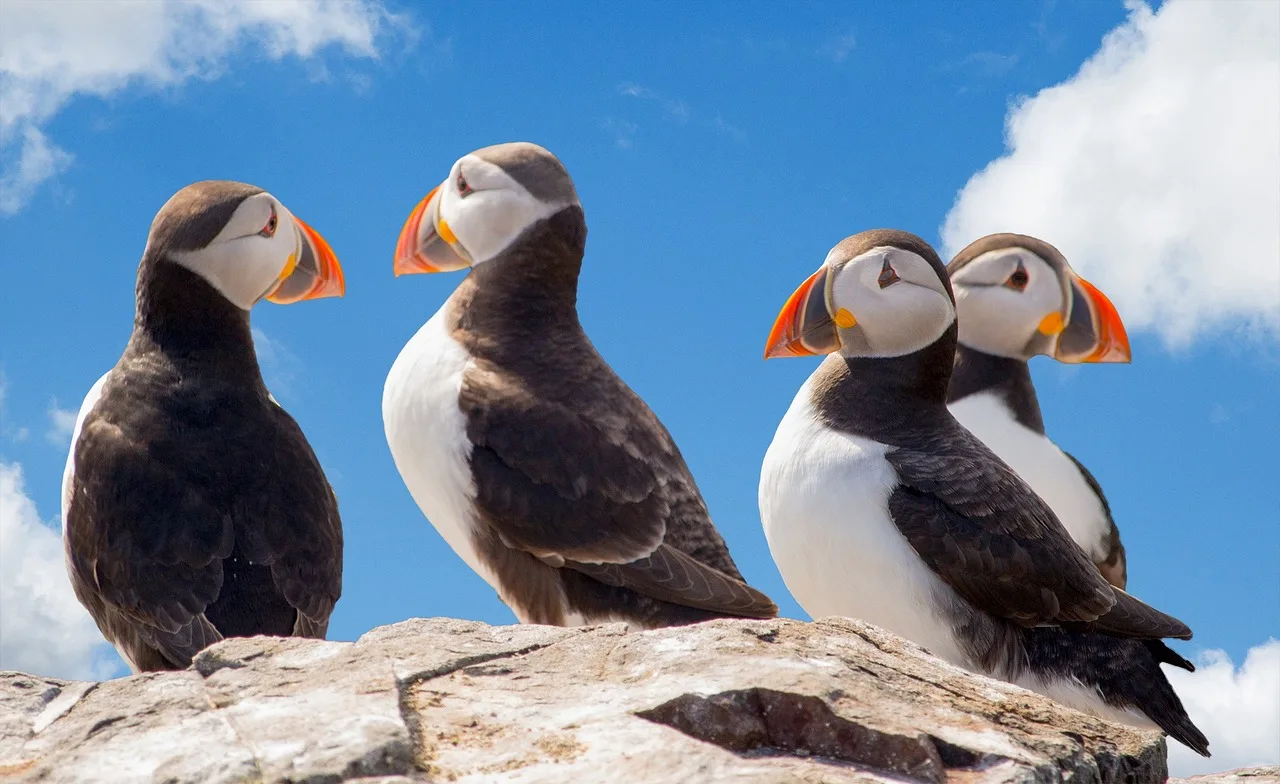
- Atlantic Puffins (Fratercula arctica): These iconic and adorable birds make their return to Iceland’s coastal cliffs during spring. Puffins nest in burrows on steep cliffs, creating bustling colonies filled with their vibrant beaks and distinctive markings.
- Arctic Terns (Sterna paradisaea): Known for their remarkable long-distance migrations, Arctic Terns arrive in Iceland during spring to breed. They construct nests on the ground, often near bodies of water, and fiercely protect their nesting territories.
- Red-Throated Divers (Gavia stellata): With their haunting calls and striking appearance, Red-Throated Divers are a sight to behold. These elegant birds nest near lakes and wetlands, their nests positioned close to the water’s edge.
- Harlequin Ducks (Histrionicus histrionicus): Sporting intricate plumage patterns, Harlequin Ducks find their nesting sites in fast-flowing rivers and streams. Their nests are typically concealed amidst rocky crevices or vegetation.
- Gyrfalcons (Falco rusticolus): As one of the largest falcon species, Gyrfalcons are a majestic presence in Iceland’s skies. They often nest on cliffs, and their nests can be spotted in remote and inaccessible locations.
- Golden Plovers (Pluvialis apricaria): These migratory birds return to Iceland in spring, their melodious calls filling the air. Golden Plovers prefer nesting in open landscapes, such as moors and tundra areas, where they build shallow ground nests.
- Common Snipe (Gallinago gallinago): These cryptically colored birds are known for their drumming displays during courtship. Common Snipes nest in wetland areas, and their well-hidden nests can be found amongst tall grasses or marsh vegetation.
The arrival of these and many other bird species signifies the rejuvenation of Iceland’s natural environment. Whether exploring coastal cliffs, wetlands, or inland meadows, birdwatchers will be captivated by the diversity and behaviors of these winged inhabitants. Spring in Iceland offers a unique opportunity to witness the courtship rituals, nesting activities, and the melodious symphony of birdlife as they prepare for the breeding season.
B. Melting Glaciers and Waterfalls (Best Time to Visit Iceland)
Iceland’s spring season showcases the mesmerizing beauty of melting glaciers and powerful waterfalls, creating a truly awe-inspiring spectacle for visitors. As temperatures rise and the snow and ice begin to melt, Iceland’s glaciers come alive, feeding numerous magnificent waterfalls throughout the country. Let’s delve into the enchanting world of melting glaciers and powerful waterfalls, along with recommendations on witnessing these natural wonders at their best:
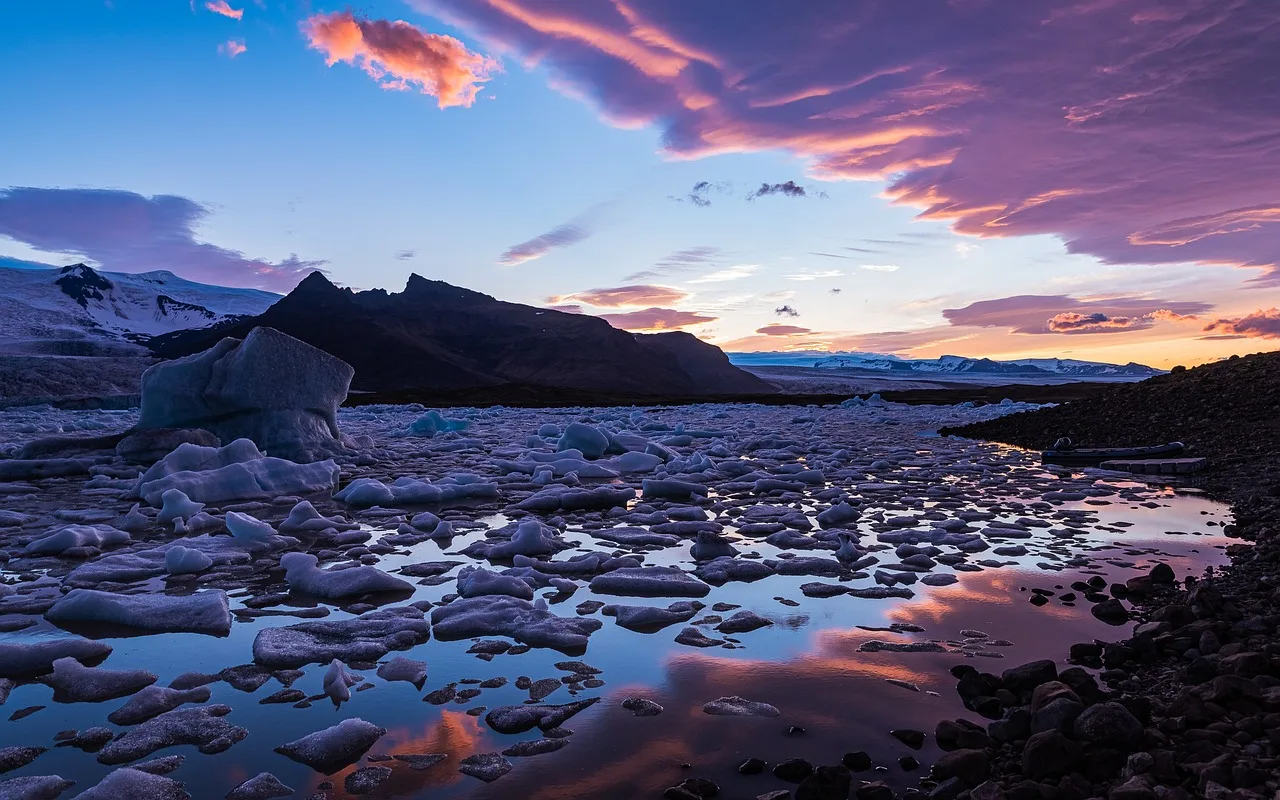
- Glacial Retreat and Ice Caves: During spring, as temperatures increase, Iceland’s glaciers start to recede, revealing stunning ice formations and creating an opportunity to explore ice caves. Vatnajökull, Europe’s largest glacier, offers mesmerizing ice cave experiences, allowing you to venture into a surreal world of blue-hued ice formations and intricate patterns. Guided tours are available, ensuring your safety while providing an unforgettable encounter with these natural marvels.
- Dynamic Waterfalls: Spring is a prime time to witness the power and grandeur of Iceland’s waterfalls. As the snow and ice melt, rivers surge with increased volume, creating spectacular cascades and thundering falls. Some notable waterfalls to visit during spring include:
- Gullfoss: Located in the Golden Circle, Gullfoss is one of Iceland’s most famous and breathtaking waterfalls. Experience the immense power as the Hvítá River plunges into a narrow gorge, creating a two-tiered cascade surrounded by mist and rainbows.
- Seljalandsfoss: This iconic waterfall offers a unique experience as you can walk behind the cascading water curtain, providing an unparalleled perspective. Witness the sun’s rays filtering through the mist, creating a magical ambiance.
- Skógafoss: With its impressive width and sheer drop, Skógafoss leaves visitors in awe. Climb the stairs to the top for a panoramic view, and feel the mist on your face as you stand near the base, experiencing the thunderous roar of the waterfall.
- Dynjandi: Located in the Westfjords, Dynjandi is a series of cascades that form a majestic waterfall. As spring arrives, the waterfall swells with melted snow, creating a breathtaking display of power and beauty.
- Glacial Lagoons: Spring brings a unique opportunity to witness glacial lagoons as they transition from winter’s frozen state. Jökulsárlón and Fjallsárlón, located near Vatnajökull glacier, are famous for their icebergs floating in crystal-clear waters. Witness the dramatic spectacle of icebergs breaking off from the glacier and drifting towards the ocean, creating a mesmerizing scene of contrasting textures and shades.
- Off-the-Beaten-Path Waterfalls: Iceland is brimming with hidden gems when it comes to waterfalls. Explore lesser-known falls, such as Hraunfossar, located in West Iceland, where water flows out of the lava field, creating a beautiful tapestry of countless small falls. Discover Faxi, a picturesque waterfall on the Tungufljót River, known for its serene beauty and proximity to the Golden Circle attractions.
As you witness the melting glaciers and powerful waterfalls during spring, remember to prioritize safety and follow designated paths and guidelines. Be prepared for changing weather conditions and wear appropriate clothing and footwear for outdoor adventures.
Embrace the captivating beauty of Iceland’s melting glaciers and powerful waterfalls during the enchanting spring season. Immerse yourself in the dynamic display of nature’s forces and create lifelong memories as you witness the raw power and breathtaking elegance of these natural wonders.
C. Moderate Weather and Outdoor Activities (Best Time to Visit Iceland)
Spring in Iceland offers the perfect balance of moderate weather, making it an ideal time for engaging in various outdoor activities and exploring the country’s remarkable landscapes. As the winter cold subsides and nature comes alive, Iceland welcomes visitors with pleasant temperatures and longer daylight hours. Let’s discover the advantages of the moderate spring weather and some exciting outdoor activities to enjoy:
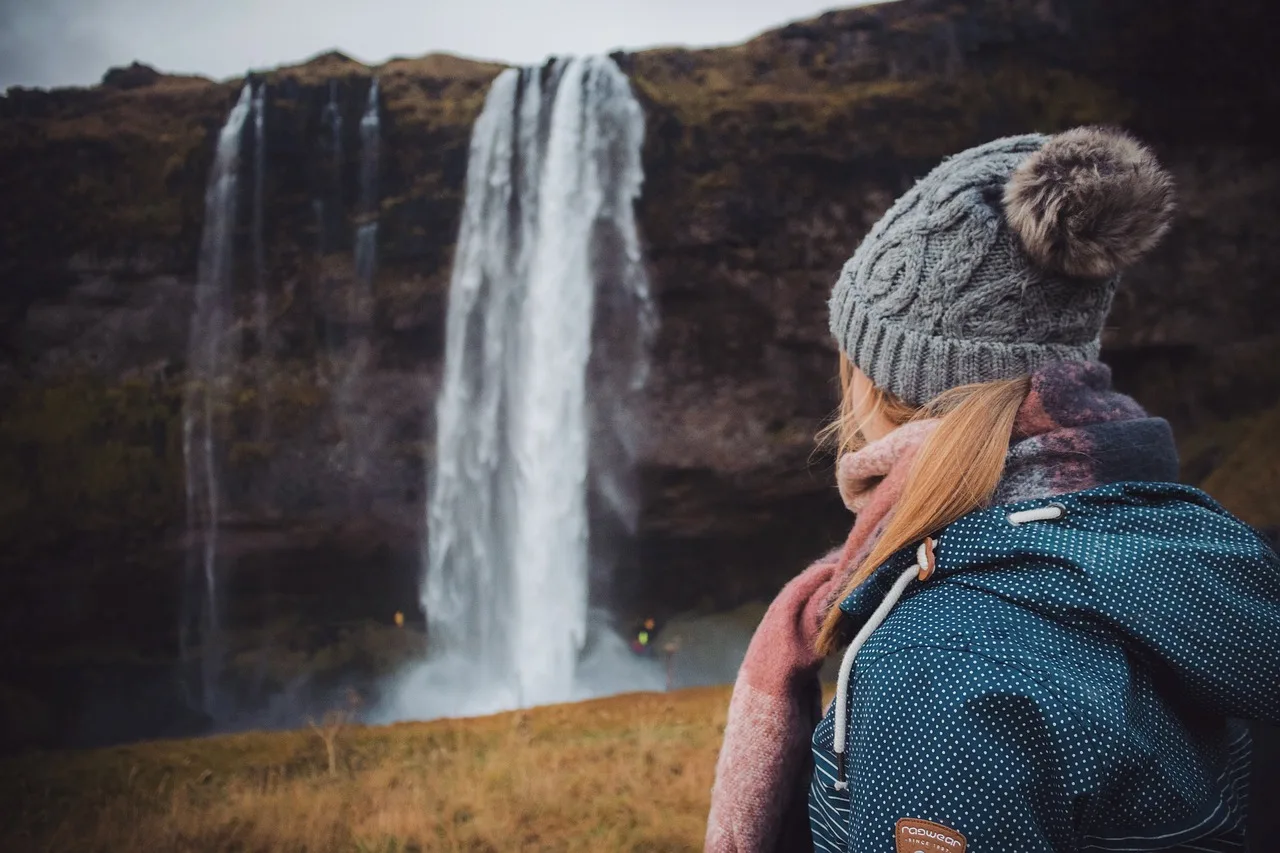
- Comfortable Temperatures: Spring brings milder temperatures to Iceland, providing a pleasant and comfortable environment for outdoor exploration. Average temperatures range from 5°C to 10°C (41°F to 50°F), creating favorable conditions for outdoor activities without the extreme cold of winter or the intense heat of summer. Dressing in layers and bringing waterproof clothing will ensure you stay comfortable throughout your adventures.
- Horseback Riding: Iceland’s rugged terrain and stunning landscapes make it a perfect destination for horseback riding enthusiasts. Spring offers an excellent opportunity to saddle up and embark on a memorable horseback riding adventure. Whether you’re a seasoned rider or a beginner, you can explore the countryside, meander through lush valleys, and soak in the scenic beauty while enjoying the unique Icelandic horse breed known for its gentle nature and comfortable gait.
- Exploring Geothermal Areas: Iceland is renowned for its geothermal activity, and spring presents a great time to explore these otherworldly landscapes. Visit the famous Geysir geothermal area, where you can witness the powerful eruptions of the Strokkur geyser. Explore the bubbling mud pots and vibrant hot springs at Hverir in the Lake Myvatn area, or immerse yourself in the soothing waters of the Blue Lagoon, a geothermal spa near Reykjavik. Spring’s moderate weather allows you to comfortably enjoy these geothermal wonders without the extreme cold or overcrowding of peak seasons.
- Nature Walks and Hiking: Spring is an excellent time for nature walks and hiking adventures in Iceland’s breathtaking landscapes. With longer daylight hours, you’ll have ample time to explore trails and immerse yourself in the stunning vistas. Experience the beauty of lush valleys, meadows adorned with colorful wildflowers, and serene coastal paths. Popular hiking destinations include the picturesque trails of Skaftafell in Vatnajökull National Park or the scenic routes in Þingvellir National Park, where you can witness the unique geological features of the area.
- Birdwatching: As mentioned earlier, spring is a paradise for birdwatching in Iceland. Take advantage of the moderate weather to observe the abundant bird species that flock to the country during this time. Grab your binoculars and explore wetlands, coastal cliffs, and other bird-rich habitats to spot various migratory and nesting birds, including puffins, Arctic Terns, and Golden Plovers.
Remember to check weather conditions, pack essentials like water, snacks, and appropriate gear, and respect the environment and wildlife during your outdoor activities. Following safety guidelines and staying on designated paths will ensure a memorable and enjoyable experience.
Embrace the advantages of moderate spring weather in Iceland and immerse yourself in thrilling outdoor activities like horseback riding, exploring geothermal areas, hiking through picturesque landscapes, and birdwatching. Discover the beauty of Iceland’s natural wonders during this enchanting season, creating cherished memories of your adventure in the land of fire and ice.
VII. Summary (Best Time to Visit Iceland)
Visiting Iceland offers a multitude of unique experiences throughout the year, each season showcasing its own set of highlights and natural wonders. To recap, here are the best times to visit Iceland based on seasonal attractions:
- Winter Solstice: A Northern Lights Extravaganza
- Witness the captivating Northern Lights during the winter months, particularly around the winter solstice.
- Explore the best locations and optimal conditions for viewing this celestial spectacle.
- Unique Harvest Experiences
- Immerse yourself in Iceland’s cultural heritage during the harvest season.
- Engage in local festivals and events centered around agriculture, offering a taste of Icelandic traditions.
- Spring Awakening
- Observe the prolific birdlife that flocks to Iceland during spring, creating a paradise for birdwatchers.
- Delight in the beauty of blooming wildflowers and the awakening of nature’s vibrant colors.
- Summer Delights
- Experience the enchantment of 24-hour daylight during the summer months.
- Explore Iceland’s thriving wildlife, indulge in outdoor activities, and immerse yourself in vibrant festivals and events.
- Chasing the Northern Lights
- Understand the science and allure of the Northern Lights, and discover the best conditions for witnessing this celestial phenomenon.
- Fall: A Colorful Affair
- Admire the vivid autumn landscapes as Iceland’s foliage transforms into a stunning display of vibrant colors.
- Enjoy fewer crowds and more affordable accommodations during this shoulder season.
Throughout the year, Iceland offers a plethora of outdoor activities and opportunities to explore its unique natural beauty. From horseback riding and hiking to exploring geothermal areas and witnessing melting glaciers and powerful waterfalls, there is something for every adventurer to enjoy.
When choosing the best time to visit Iceland, consider your personal preferences and desired experiences. Whether you long for the magic of the Northern Lights, the vibrant energy of summer, the tranquility of spring, or the captivating colors of fall, each season holds its own allure.
Pack your bags, embrace the wonders of Iceland, and embark on a journey that aligns with your interests and creates memories to last a lifetime. Iceland’s breathtaking landscapes and natural marvels await, ready to inspire and leave you in awe of the island’s unique charms. (Best Time to Visit Iceland)
VIII. FAQs (Frequently Asked Questions) (Best Time to Visit Iceland)
Here are answers to some frequently asked questions about visiting Iceland:
- When is the optimal time to visit Iceland for outdoor activities?
- The summer months (June to August) offer the best weather and longer daylight hours for outdoor activities like hiking, horseback riding, and exploring Iceland’s diverse landscapes.
- At what time can I witness the Northern Lights in Iceland?
- The Northern Lights are visible in Iceland from September to April, with the peak months being October to March. The winter months provide darker skies, increasing your chances of witnessing this mesmerizing natural phenomenon.
- Are there any specific festivals or events during the summer?
- Yes, Iceland hosts various festivals and events during the summer months. The most famous ones include the Secret Solstice music festival in Reykjavik, the Icelandic National Day celebrations on June 17th, and the Reykjavik Pride festival in August. These events showcase Iceland’s vibrant cultural scene and provide memorable experiences for visitors.
- Is it possible to witness both the Midnight Sun and the Northern Lights during the same visit?
- No, the Midnight Sun occurs during the summer months when the sun remains above the horizon for 24 hours. The Northern Lights, on the other hand, are visible during darker nights in the winter months. To experience both phenomena, you would need to plan separate visits during different seasons.
- What should I pack for different seasons in Iceland?
- Regardless of the season, it’s essential to pack layers of clothing, including waterproof and windproof outerwear, thermal base layers, hats, gloves, and sturdy footwear. In winter, pack warm, insulated clothing, while in summer, include lighter layers, sunglasses, and sunscreen.
- Are the roads accessible during winter for self-driving?
- Iceland’s road conditions can be challenging in winter due to snow, ice, and limited daylight hours. It’s recommended to check road conditions and weather forecasts regularly. Consider booking guided tours or using public transportation if you’re not experienced with winter driving.
- Can I swim in Iceland’s geothermal pools during all seasons?
- Yes, you can enjoy Iceland’s geothermal pools throughout the year. The famous Blue Lagoon and many other geothermal spas and swimming pools are open year-round and provide a relaxing and rejuvenating experience. Don’t forget to bring your swimsuit and towel along!
Remember to plan and prepare accordingly for your trip to Iceland, considering the specific season and activities you wish to engage in. Stay informed about weather conditions, road accessibility, and any seasonal events or festivals to make the most of your Icelandic adventure. (Best Time to Visit Iceland)



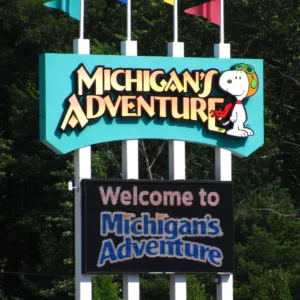
Pingback: Top 10 Overwater Bungalows Caribbean and Mexico: An Ultimate Guide to Paradise - Travel
Pingback: Portland Rose Festival 2023 - Celebrating Tradition, Diversity, and Community Spirit